Hyundai has officially unveiled the new Ioniq 9 which marked yet another expansion to its iconic Ioniq family. The new model is the first Ioniq electric SUV to offer 3 seating rows, putting it head-to-head against the Kia EV9.
In fact, the Ioniq 9 was built on the same Electric-Global Modular Platform (E-GMP) architecture as per Kia EV9. That being said, you can distinguish them easily as both models feature different exterior designs.
Hyundai Ioniq 9 is available in three flavours
Let’s start with how much firepower the Ioniq 9 can offer. The new electric SUV can be obtained in 3 drivetrain configurations including the Long-Range Rear-Wheel Drive (RWD) model which has a 160kW (215hp) electric motor and 350Nm of torque.
There’s also the Long-Range All-Wheel Drive (AWD) version that has an additional 70kW front motor which helped increase the variant’s total output of 230kW (308hp) and 605Nm of torque. You can also get your hand on the Performance AWD model which offers maximum power output of 320kW (429hp) with 700Nm torque.
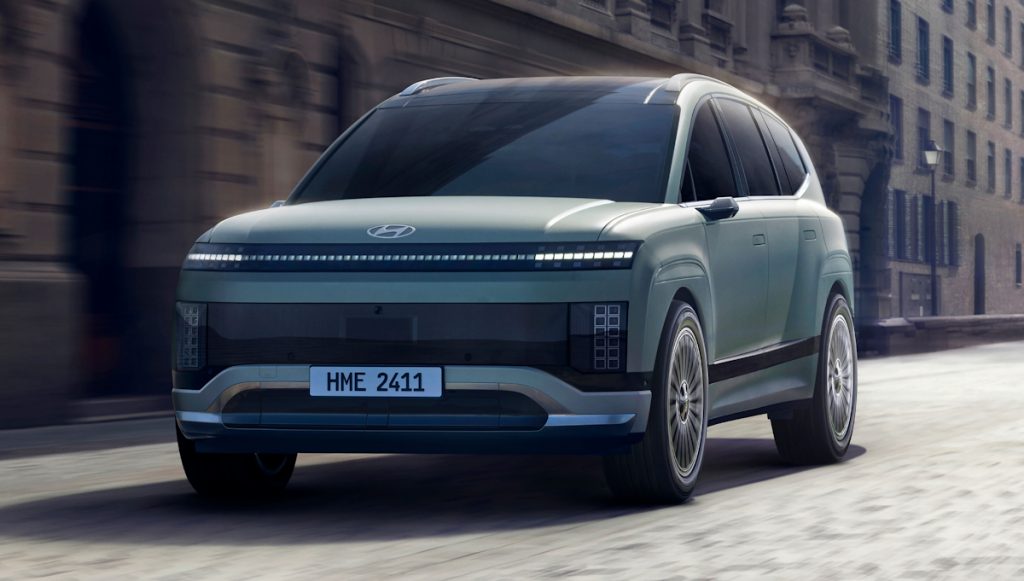
When it comes to 0-100km/h timing, Ioniq 9 Performance AWD naturally lead the chart with 4.9 seconds while its Long-Range AWD counterpart takes slightly longer at 5.2 seconds. As for the Long-Range RWD, its century sprint timing is said to be 9.4 seconds.
However, do note that the timing above was achieved using 21-inch wheels for the AWD models. For the Long-Range RWD variant, the timing was recorded with 19-inch wheels.
Hyundai Ioniq 9 battery, range, charging
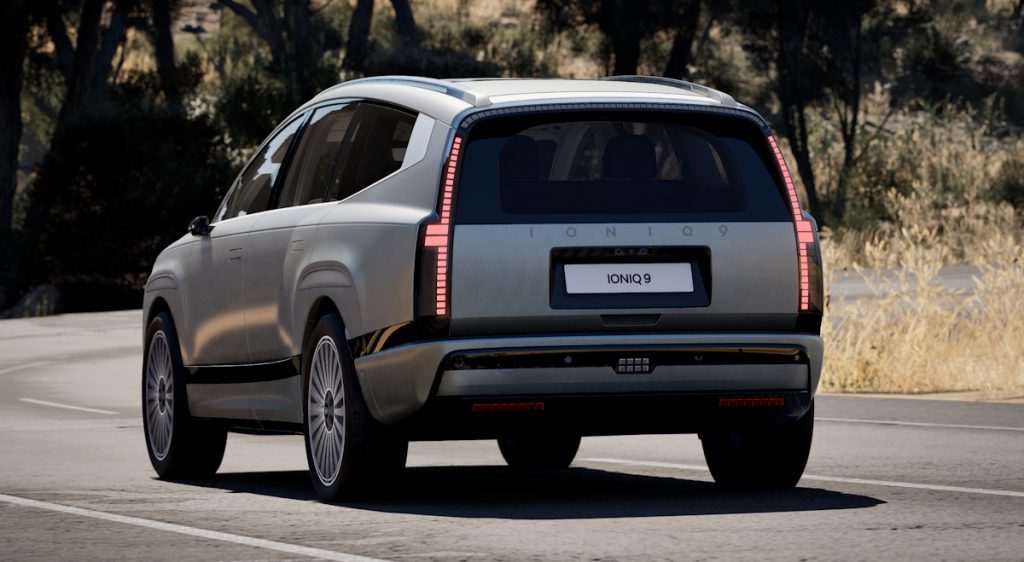
Meanwhile, all three Ioniq 9 variants are powered by the same 110.3kWh NCM battery pack. In terms of range, Hyundai so far has only released the figure for the Ioniq 9 Long-Range RWD model which is claimed to be 620km based on the WLTP standards.
Charging-wise, Hyundai did not reveal the exact AC and DC charging speed that Ioniq 9 can support. Since it is an EV with 800V architecture, rest assured that the Ioniq 9 can support ultra-fast DC charging speed.
Hence, it is not surprising to see Hyundai claim that the Ioniq 9 only takes 24 minutes of charging time to recharge its battery from 10% to 80% with a 350kW charger. As the existing Ioniq 5 and Ioniq 6 come standard with the Vehicle-to-Load (V2L) feature, it is just natural that the new Ioniq 9 is also able to offer such a feature although the exact power output has not yet been revealed.
Hyundai Ioniq 9 exterior
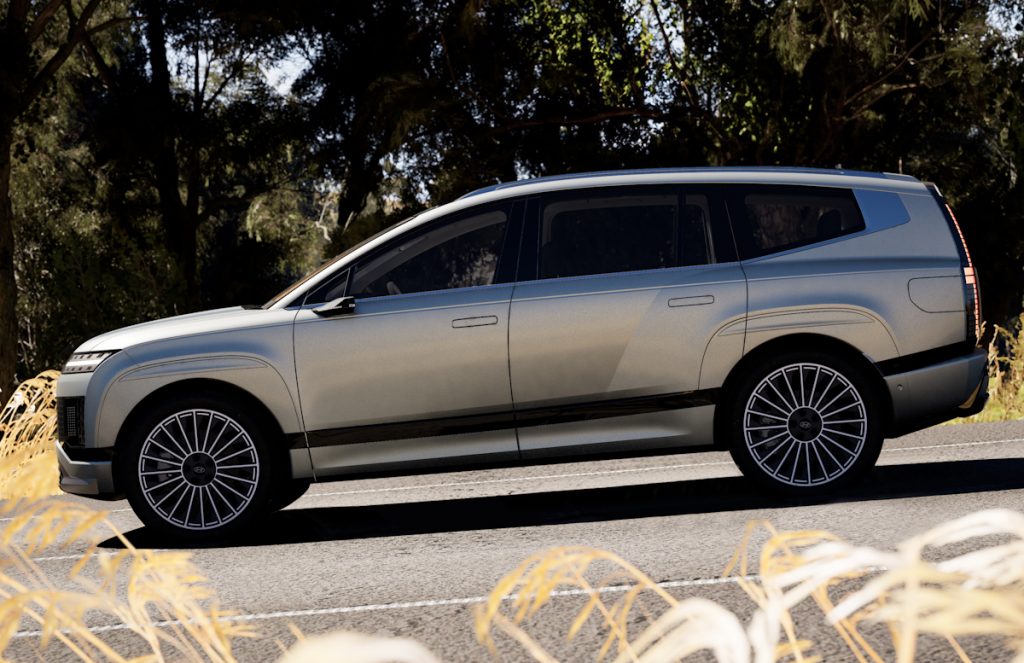
Now that the juicy performance and electrical figures are out of the way, it is time to explore other finer details of this new SUV. For one, the Ioniq 9 is a massive vehicle since it is 5m long, almost 2m wide and 1.8m tall.
This is in addition to having a 3.1m wheelbase which is the longest of any given Hyundai models so far. That being said, Ioniq 9’s dimensions are comparable with existing 3-row electric SUVs in Malaysia including the Kia EV9 GT-Line and Mercedes-Benz EQS SUV.
For some good measure, we also include the dimensions for the Hyundai Palisade and Kia Carnival:
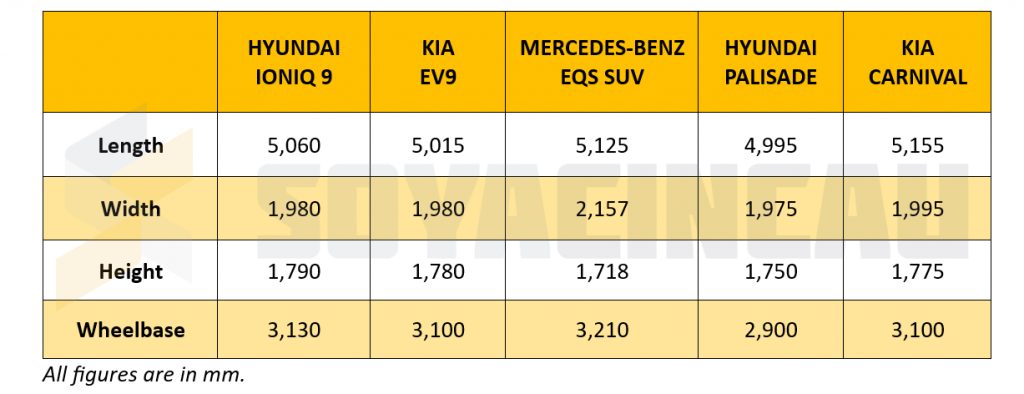
Hyundai has certainly put some effort into Ioniq 9’s aerodynamic characteristics to help optimise the EV’s efficiency. For example, the streamlined aerodynamic profile and digital side mirrors allow the Ioniq 9 to obtain a low drag coefficient of just 0.259 Cd.
The EV also comes with a dual-motion active air flap system to help smoothen out and balance the airflow under its body. Not only that, the Ioniq 9 also features a 3D-shaped underbody cover, aerodynamic wheels and hidden antennas.
Hyundai Ioniq 9 spacious interior
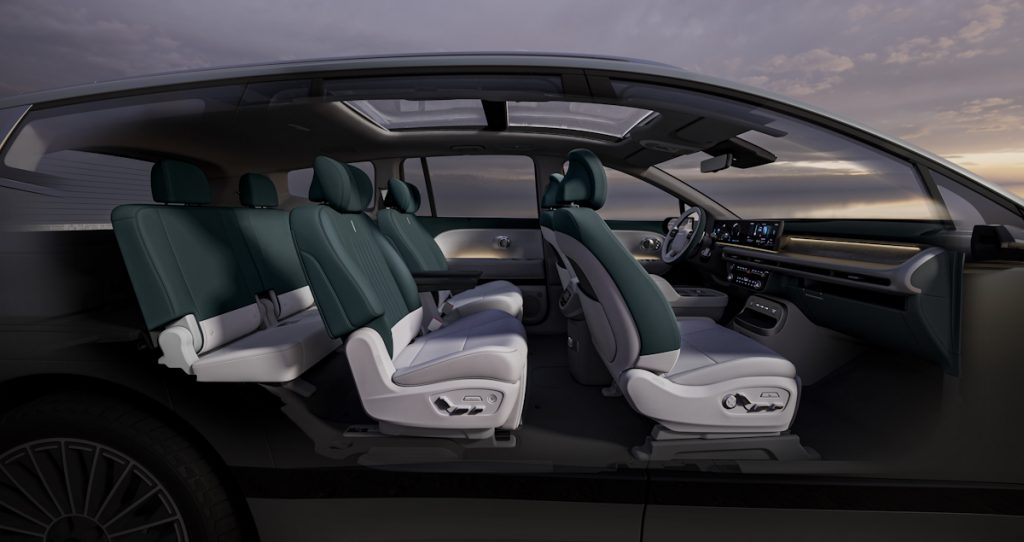
Available with 6- and 7-seater configurations, Hyundai has fitted Relaxation Seats on the first and second row of the Ioniq 6. These seats offer a variety of features including Dynamic Touch Massage as part of Hyundai Motor’s new Dynamic Body Care system that is designed to reduce fatigue, especially during love drives.
The system achieves this by using pressure and vibration to stimulate blood flow and circulation. These Relaxation Seats can also be fully reclined while the second-row seat can also be turned to face third-row occupants when the EV is stationary.
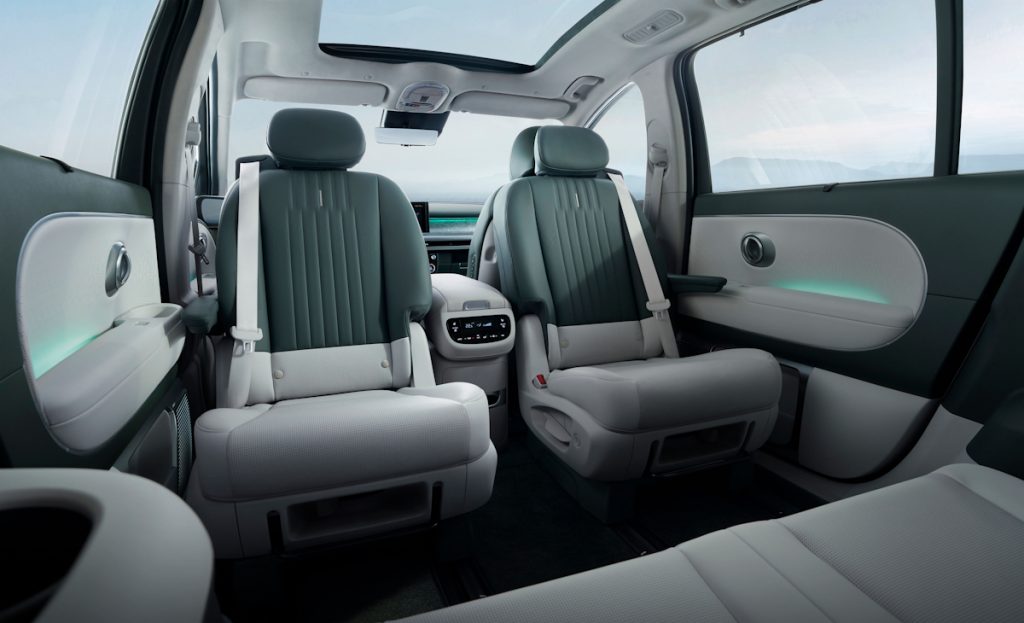
Even with the seats fully up, the Ioniq 9 offers a rather impressive 620L of boot space which can be expanded further to 1,323L when the third row seats are folded flat. As if that is not enough, there is also a frunk in Ioniq 9 which adds up to 88L of additional storage space depending on the variant.
Meanwhile, the Ioniq 9 has also been fitted with a 12-inch digital instrument cluster and a 12-inch infotainment touchscreen which are housed within the same panoramic curved display. Ioniq 9 drivers can take advantage of the new Auto Terrain Mode which uses AI to recognise road surfaces and select the optimal driving mode.
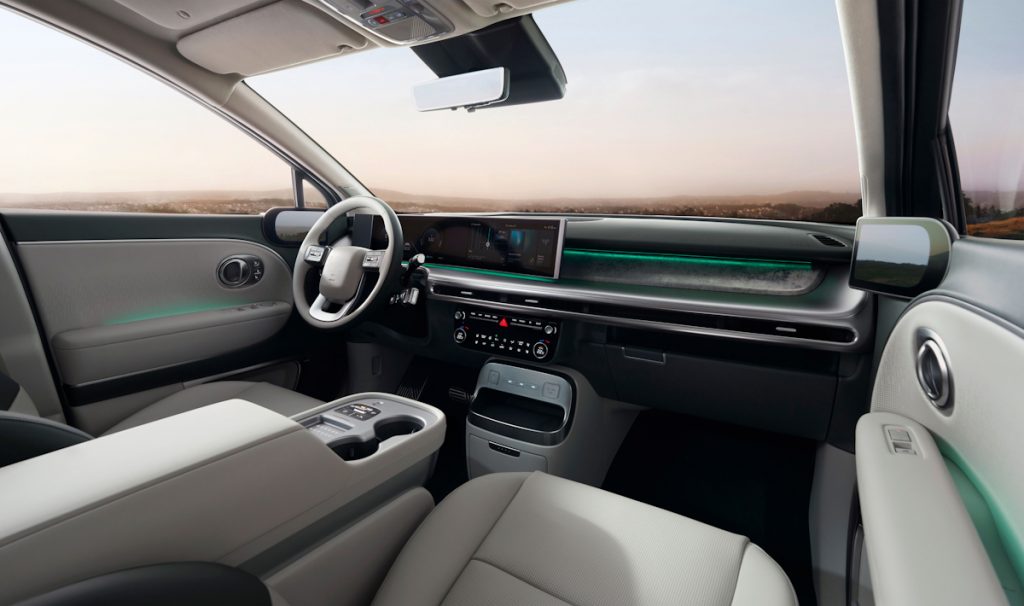
To help deliver a quieter ride inside Ioniq 9, Hyundai has implemented an Active Noise Control-Road (ANC-R) system on the EV. The system works in a similar manner to active noise cancellation technology inside many headphones out there and can reduce in-cabin noise by up to 3dB.
Speaking about audio experience, the new EV comes standard with an 8-speaker audio system although customers may upgrade to a Bose 14-speaker 5.1-channel surround sound system. In case you feel the need to spice up your drive, you can choose to turn on the e-Active Sound Design which would deliver the virtual driving sound through Ioniq 9’s audio system.
Another interesting addition to the Ioniq 9 is its 100W USB-C port which sources power directly from the high-voltage battery instead of the vehicle’s 12V battery. Furthermore, this EV can also be obtained with a built-in multi-tray UV-C sterilizer in certain markets.
Hyundai Ioniq 9 to be available in 2025.
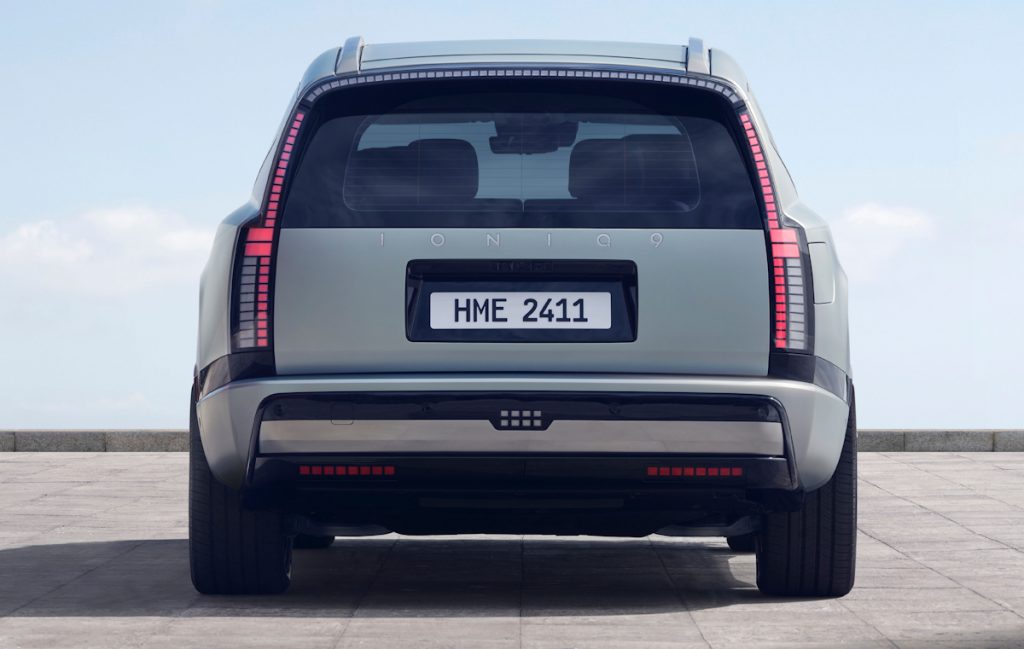
So, how about its availability? According to Hyundai, the Ioniq 9 will be rolled out in Korea and the United States within the first half of 2025.
Only then the EV will be heading to Europe and other markets. With that, don’t expect the Ioniq 9 to arrive in Malaysia anytime soon but nevertheless, we will keep you updated once we receive more news about it from Hyundai.
Hyundai Ioniq 9: The brand’s first 3-row electric SUV, offers up to 429hp and 620km of range
News Reports PH
0 Comments